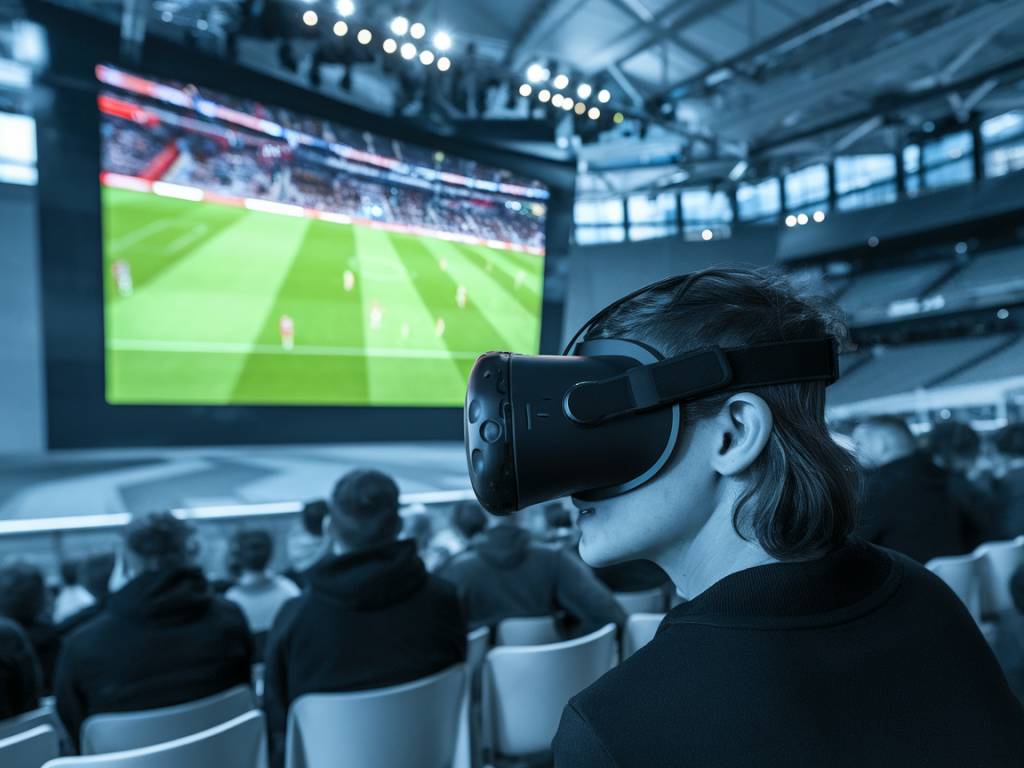The Impact of Virtual Reality on Fan Engagement in Sports
Virtual reality (VR) is progressively changing the landscape of numerous industries, and sports are no exception. This immersive technology is creating new ways for fans to engage with their favorite sports, enhancing their experiences in ways that were previously unimaginable. Combining the excitement of live sports with the immersive qualities of VR, the industry is providing innovative solutions to increase fan involvement and boost overall engagement. This article examines the significant impacts of VR on fan engagement in sports, focusing on key areas such as live event experiences, at-home viewing, athlete training, and fan interaction.
Enhancing Live Event Experiences
For many sports enthusiasts, attending a live event is an unparalleled experience. The roar of the crowd, the energy in the stadium, and the thrill of seeing athletes perform in person create a unique environment. Virtual reality is now augmenting this experience by offering additional layers of engagement that elevate the live event atmosphere.
VR can provide enhanced visual and auditory experiences during live games. For instance, fans can use VR headsets to access multi-angle views, replays, and exclusive behind-the-scenes content. This level of access creates an immersive experience, making viewers feel as though they are part of the action.
Additionally, VR allows fans to experience events from perspectives they wouldn’t normally have, such as from the sidelines, the locker room, or even on the field. This expanded access offers a deeper connection to the game and can be particularly beneficial for fans who may not have the opportunity to attend games in person.
Revolutionizing At-Home Viewing
While attending a live event is a desirable experience for many, most sports fans watch games from the comfort of their homes. Virtual reality is dramatically transforming at-home viewing by providing a more interactive and engaging experience.
One intriguing application of VR in at-home sports viewing is the virtual stadium. Fans can watch games as if they were seated in a premium location within the stadium, offering an immersive and social aspect to the viewing experience. They can interact with other virtual attendees, share reactions, and even participate in virtual cheering.
Moreover, VR technology allows for customizable viewing experiences. Viewers can choose their camera angles, watch multiple games simultaneously, or access in-depth player statistics and game analysis in real-time. This level of personalization caters to individual preferences, making the viewing experience more satisfying.
Enhancing Athlete Training
Although primarily focused on fan engagement, VR technology is also significantly benefiting athletes themselves. Training is a crucial aspect of any sport, and VR offers advanced tools that enhance training programs, aiding in player development.
Through VR simulations, athletes can practice scenarios and play strategies without the physical wear and tear associated with traditional training methods. This is particularly useful in sports like football and basketball, where understanding complex plays and tactics is essential for success.
Additionally, VR helps athletes improve their mental acuity by simulating high-pressure situations, allowing them to react and make decisions swiftly and accurately. The ability to virtually experience and analyze their performance offers athletes valuable insights that can be used to refine their skills.
Facilitating Fan Interaction and Community Building
One of the most significant ways VR is impacting fan engagement is by enhancing interaction and building communities. Sports bring people together, and VR provides new platforms and opportunities for fans to connect and share their passion.
Virtual reality fan zones and lounges allow supporters of the same team to come together in a virtual space, interact with each other, and celebrate their favorite moments in real-time. These virtual gatherings recreate the social aspects of attending a live event, fostering a sense of community among fans regardless of their geographical location.
Additionally, VR-based fan interaction extends beyond game days. Teams and leagues can host virtual meet-and-greets, Q&A sessions with players, and exclusive events for their fan base. This constant interaction keeps fans engaged and fosters a deeper connection with their favorite teams and athletes.
Expanding Sponsorship and Marketing Opportunities
The introduction of VR into sports has opened up innovative marketing and sponsorship opportunities that enhance fan engagement while providing value to brands and businesses.
Virtual reality experiences offer unique advertising opportunities, such as branded virtual environments and in-game advertisements that are immersive and less intrusive than traditional methods. Brands can create engaging, interactive experiences that resonate with fans and offer them memorable and positive connections with their products or services.
Moreover, VR allows for detailed consumer insights and analytics. Businesses can better understand fan behavior and preferences through data collected from VR activities, enabling them to tailor their marketing strategies more effectively.
Overcoming Geographic and Physical Barriers
One substantial benefit of VR technology in sports is its ability to overcome geographic and physical barriers, making sports more accessible to a broader audience.
Fans from around the world can experience major events without the need for travel. VR brings the stadium experience to the viewer, making it possible for people who are unable to attend due to distance, cost, or physical limitations to partake in the excitement of live sports.
Additionally, VR can provide unique opportunities for differently-abled fans to experience sports in ways that were previously unavailable to them. The immersive nature of VR helps to create an inclusive environment where everyone can enjoy and engage with their favorite sports.
Conclusion
Virtual reality is undoubtedly revolutionizing the way fans engage with sports. By enhancing live event experiences, transforming at-home viewing, aiding in athlete training, facilitating fan interactions, and expanding marketing opportunities, VR is creating immersive, interactive, and personalized experiences that elevate the overall engagement of sports enthusiasts. As the technology continues to evolve, its role in enhancing fan engagement will only grow, offering exciting possibilities for the future of sports entertainment.






More Stories
The future of pay-per-view in the age of digital sports media
How streaming platforms are changing the way we watch sports
The rise of athlete-driven media: a new era in sports storytelling